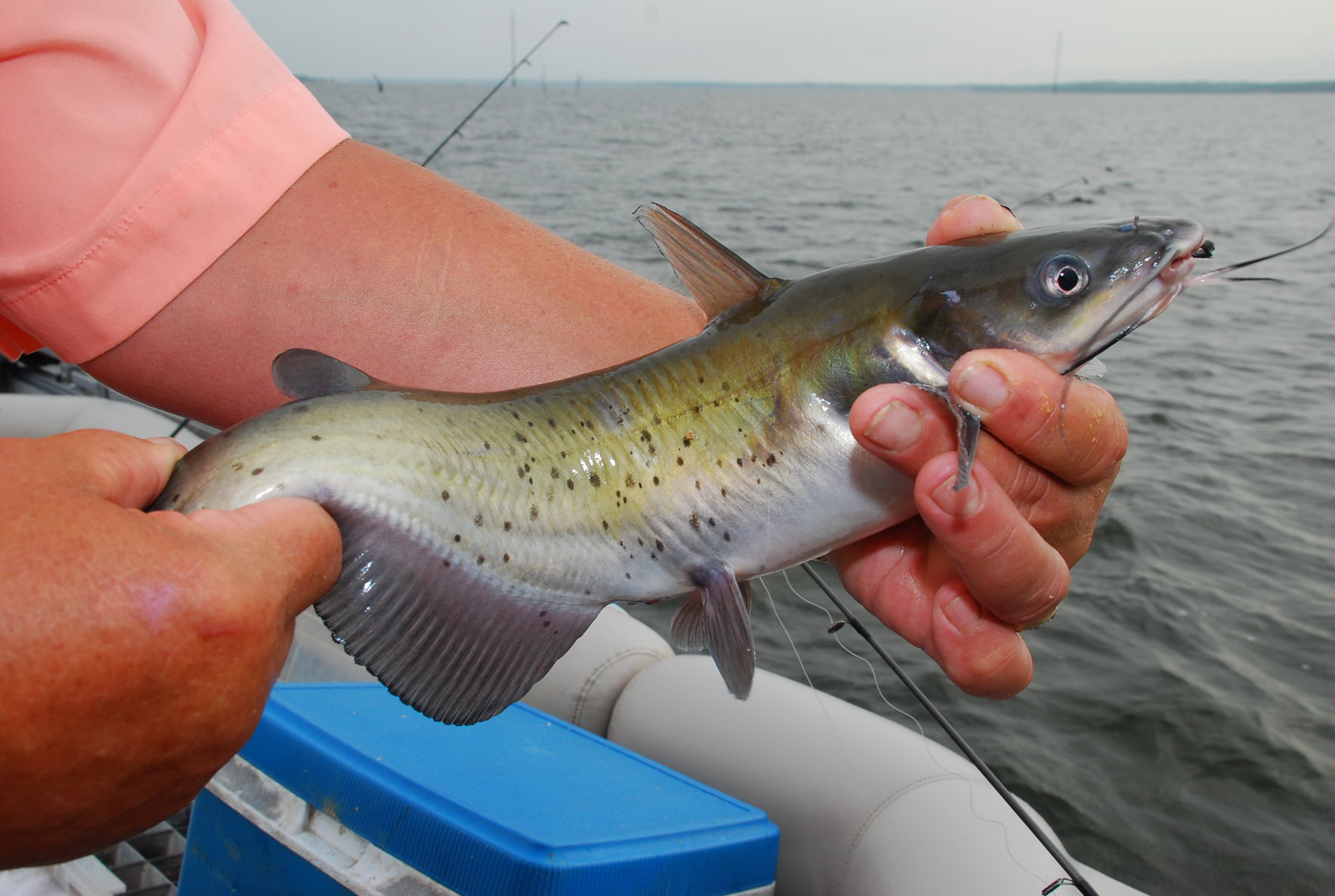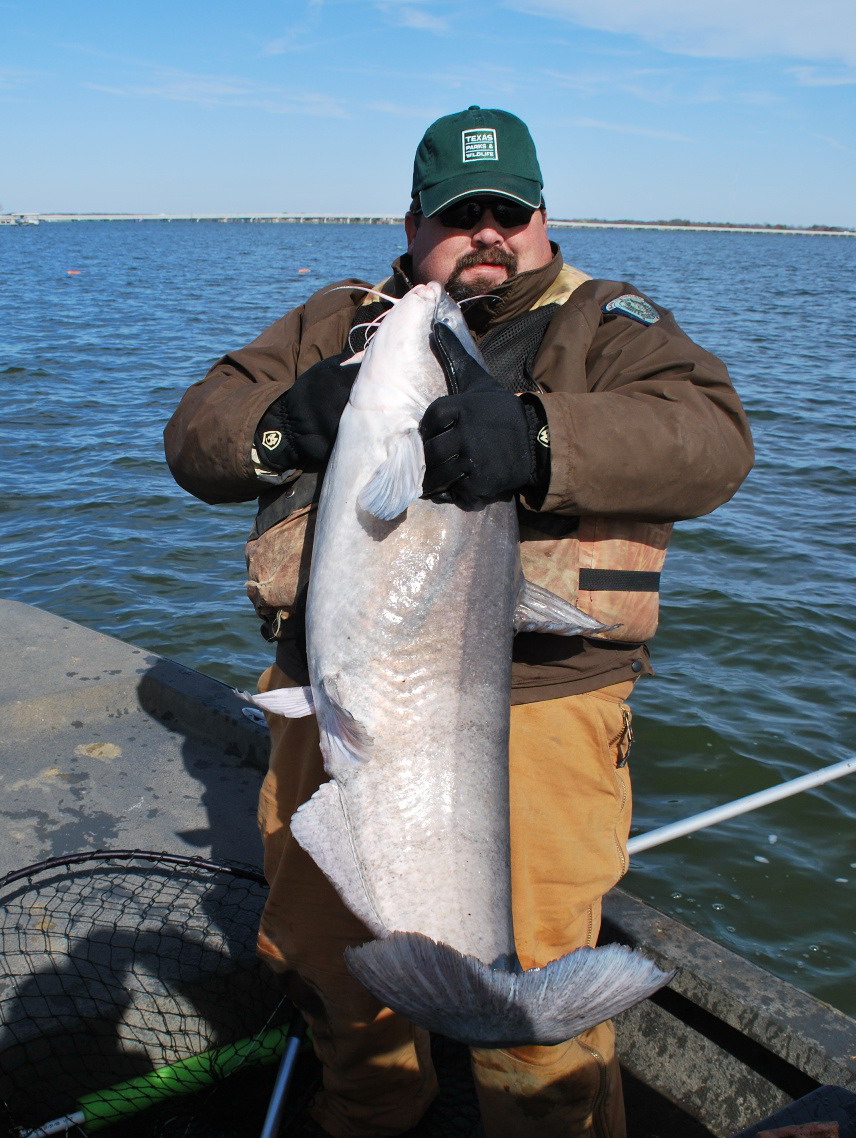Noodling has been around for centuries, but in Texas – where it didn’t become legal until 2011 – biologists are still fishing for answers.
“Handfishing” or “grappling,” the act of wading into shallow areas in rivers and lakes and using hands and feet to probe holes where catfish have taken up residence before allowing them to latch onto an appendage, had brought as much as a $500 fine in Texas before House Bill 2189 was passed and signed into law.
The pursuit has hit the mainstream, being featured in numerous reality shows and TV programs, but the Texas Parks and Wildlife Department continues to be vigilant about the tactic, enlisting a statewide study involving flatheads, and catch methods of all catfish varieties.
Kris Bodine, a fisheries research biologist at the Heart of the Hills Fisheries Science Center in Mountain Home, leads the project, which is focused on the growing recreation that is catfish angling.
“We’re not trying to necessarily determine how much of an impact noodling will have as much as how it pertains to the overall catfish fishery,” Bodine said. “One of the things Texas is doing right now is putting together a statewide catfish management plan. One part of that is to determine harvesting of catfish and what anglers are using to catch them. The other part is gauging what types of anglers we have and their opinions toward the managing of the fishery.”
Bodine said the study includes a tagging project on an East Texas lake that is aimed at flatheads.
“We spent a few days in April (on Lake Palestine) and we collected 255 flathead catfish,” he said. “They ranged in size from 18 to about 53 inches and we put tags in them and released them. They’ll be out there for a year and we can look at how many of those tags come back. We call it exploitation — the percentage of the fishery that’s being harvested — by each angling type, not just noodling. That’s one thing we don’t know a lot about in general is flathead catfish, period. Historically, we haven’t done a whole lot of sampling or managing the species.”

Flatheads, the main angling target for noodlers, differ from the more abundant channel catfish and blue catfish that inhabit many of the same waters. They mature and reproduce slowly, and feed exclusively on live bait. While “mudcats” can grow to extreme sizes, the daily bag limit is vastly different. License holders are allowed to keep an aggregate of 25 blue and channel cats daily with a 12-inch minimum, while they can only keep five flatheads that must be at least 18 inches.
Flatheads are like largemouth bass in that the largest fish are females on or near nests, and while most bass anglers are catch-and-release artists, most folks who get their hands on a big catfish keep it for dinner. That potentially could have a negative impact on the population, but there is little viable data to make any solid determination, which again has biologists probing a variety of other issues.
“In terms of managing catfish, it’s really picked up in the last decade, and to do that we’ve had to collect a whole suite of information on all the different angling types,” he said. “And suddenly handfishing came about and we knew nothing about it, so we’re trying to do what we can and make that a recreational sport that is sustainable for those guys, too.”
“Obviously any new type of angling method is going to have some type of impact on the fishery, but whether it’s good or bad we don’t know yet. That’s one of the things we’d like to know and how it will change things. And if it does change things, how can we make the situation so that all parties or all groups can utilize the resource.”
Bodine said that one portion of the statewide catfish plan is to monitor catch rates on a variety of tackle, mainly to decide how to manage fisheries for all species.
“We do want to know what size fish the hand fishermen catch, but with that, we also want to know what size the other folks are catching, too,” he said. “We’ve heard all kinds of stories. Some people say hand fishermen are super effective while some people say the trot liners are super effective. But without having a tagging study to measure that, we don’t know.”
Catfish always have been an everyman’s fish — one that the average angler can fully take advantage of across the state — but in recent years the pursuit of the whiskered species with multiple nicknames has grown, something that has biologists excited.
“We kind of talked inside the agency and catfish are becoming the new largemouth bass,” Bodine said. “Folks are really utilizing those resources. From the weekend warrior to the specialized angler, anybody can go catfishing. That’s the great thing about it. You don’t have to have a $40,000 bass boat. Catfish is a really good opportunity for folks to get outdoors.”
Noodling is the same as any other fishing pursuit – to be legal anglers must have a valid license issued by TPWD that includes a freshwater fishing stamp (endorsement).
While the pursuit is effective, it also features dangers in a variety of forms, namely other critters that bite back, including water moccasins and snapping turtles that frequent the same areas as big catfish. Other hazards include currents that could be swifter than many people realize and submerged obstructions such as logs and stumps that could catch on and pose a drowning risk.
If you decide that noodling is worth a try, always take a buddy, who would be there to help out should an accident occur, and who also could revel in the pursuit should you come eye to eye with a fish that you wrangled with your bare hands.




















You summed this up well Wil.
I don’t think TPW anticipated the popularity that noodling would have, thinking only a few crazy folks would try it but they were wrong. It’s growing and growing fast and unfortunately there is a mentality that is killing much of these big catfish that are available in limited numbers.
The biggest issue with noodling in Texas is how it went down. It was a pure issue of a few people with big money being able to get it pushed through and work around the parks and wildlife department. The majority of Texas anglers are against it and it’s still going on.
I’ve been kicking around doing a podcast on how this happened, I think I’m going to do it.
tonypennebaker@hotmail.com